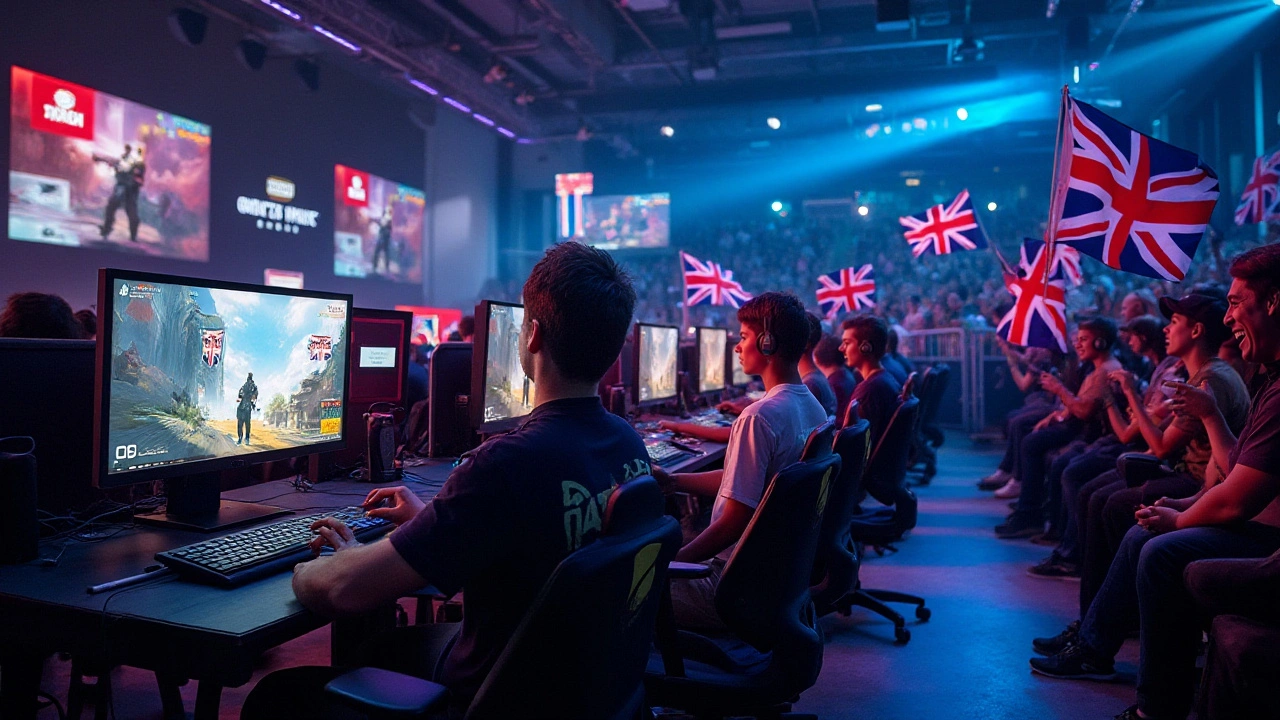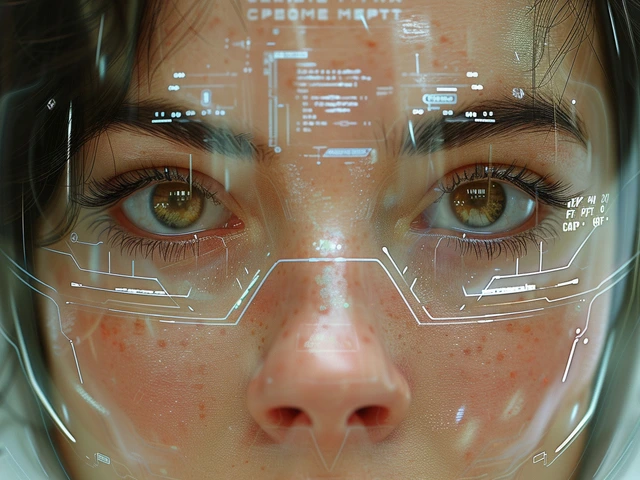As gaming continues to grow in popularity, in-game ads are becoming a significant tool for brands to connect with their audience. These ads have evolved from intrusive banners to immersive experiences that blend seamlessly into the gameplay.
This evolution has made in-game advertisements more engaging and effective, paving the way for a new era of marketing strategies. In this article, we’ll explore how these ads work, their benefits to both gamers and brands, current trends, and what the future might hold for this dynamic form of advertising.
- The Evolution of In-Game Ads
- How In-Game Ads Work
- Benefits for Gamers
- Advantages for Brands
- Current Trends in In-Game Advertising
- Future Possibilities
The Evolution of In-Game Ads
The world of in-game advertisements has seen a remarkable transformation over the past few decades. Initially, these ads were simple banners or pop-ups that disrupted the gaming experience. Gamers found them annoying, and this often led to negative perceptions of the brands involved. However, as the gaming industry grew, so did the sophistication of in-game ads.
In the early 2000s, brands started integrating more creatively into games. For instance, sports games like FIFA and NBA Live featured virtual billboards that mirrored real-world advertising. This was a significant step forward as it provided a more authentic feel, mimicking how advertisements look in real sports arenas. Players appreciated these efforts because the ads blended into the gaming environment instead of sticking out like sore thumbs.
Another milestone in the evolution of in-game ads was the inception of advergames. These are games created explicitly to promote a brand, product, or service. One notable example is 'America's Army,' a game developed by the U.S. Army to promote military recruitment. The game not only provided entertainment but also served as an effective recruitment tool, demonstrating the power of well-executed in-game advertising.
More recently, dynamic in-game ads have become prevalent. Unlike static ads, dynamic ads can be altered in real-time and tailored to specific demographics. This means players from different regions or age groups might see different advertisements within the same game. This approach allows brands to target their audience more precisely and helps keep the ads relevant and engaging. A prime example of this is how racing games, such as Need for Speed, use real-time updates to feature current brand campaigns on in-game billboards.
Integration with Game Stories
One of the most significant advancements in in-game ads is their seamless integration into game narratives. Instead of being obvious and interrupting the gameplay, ads are now woven into the storylines. For instance, action games might feature characters using real-world branded products, or adventure games could have missions sponsored by certain brands. This approach not only makes the ads less intrusive but also enhances the gaming experience by adding a layer of realism.
"In-game advertising has evolved from a disruptive force to a seamless narrative element that enhances the player's immersion," says Jane Smith, a leading expert in digital marketing.
Today's gamers expect a high level of immersion, and when brand integration is done right, it can add a new dimension to the game. It's no longer just about splashing a logo on the screen; it's about creating connections that feel natural and meaningful.
Future Trends
Looking ahead, the future of in-game advertising seems even more promising. With the advent of virtual reality (VR) and augmented reality (AR), we are likely to witness a new era of immersive ads. Imagine playing a VR game where you can interact with branded elements in a lifelike environment, or an AR game where real-world ads are seamlessly blended with your surroundings. These innovations could redefine the boundaries of advertising and offer unprecedented opportunities for brand engagement.
The journey of in-game ads from being a nuisance to becoming an integral part of the gaming experience is truly fascinating. This evolution reflects the broader trends in digital marketing, where the focus is on creating value and enhancing user experience. By continuously adapting and innovating, in-game advertising has managed to stay relevant and impactful, bridging the gap between gamers and brands in ever more sophisticated ways.
How In-Game Ads Work
In-game ads have undergone a massive transformation. From static banners distracting gameplay to deeply immersive experiences that actually enhance the game, the landscape has changed. So, how do these ads work in today's gaming environment? The answer is fascinating and multi-faceted.
First off, one common method is the integration of branded elements directly into the game environment. This means you might see a well-known soft drink or shoe brand within the game's virtual world, seamlessly blending into the scenery. These subtle inclusions allow players to engage with the brand without breaking the immersion.
Another popular approach involves dynamic ads, which can be updated in real-time. Picture digital billboards in a racing game that change based on the latest ad campaign. These dynamic elements mean brands can stay relevant, and gamers often appreciate the updates that align with real-world events.
One can’t ignore the rise of rewarded video ads. Instead of viewing ads as a nuisance, players are now offered incentives like bonus points or in-game currency in exchange for watching a short video. This mutual benefit keeps gamers happy while giving brands guaranteed attention.
Most interestingly, augmented reality (AR) and virtual reality (VR) are beginning to play significant roles in this space. Imagine playing a VR game where you can interact with branded virtual items just like you would in the real world. These interactive experiences are taking in-game ads to entirely new levels.
Data is the backbone of any successful in-game ad campaign. Developers and brands analyze gameplay data to tailor ads precisely targeted to the player's habits and preferences. This strategy ensures that ads are not just random but feel like a natural part of the gaming experience.
Lastly, cross-promotion within game ecosystems is becoming increasingly efficient. For instance, a character from one popular game might appear in another, offering unique branded content and enticing players to explore new titles.

Benefits for Gamers
When it comes to the benefits of in-game ads for gamers, there's more than meets the eye. Often, the first thought is that ads interrupt the immersive gaming experience. However, modern in-game advertising has evolved to become a part of that immersive experience itself.
Firstly, in-game advertisements can significantly reduce the cost of games. Many game developers offer free-to-play games that are monetized through ads. This model allows gamers to enjoy high-quality games without spending a penny. As the cost of gaming hardware and titles continues to rise, this is a welcome relief for many.
Secondly, these ads are becoming more relevant and tailored to the individual player. Imagine playing a racing game and seeing billboards for brands you love or discovering new products that actually interest you. The personalization of ads enhances the gaming experience by making the game world feel more realistic and relatable. This tailored experience is achieved through sophisticated algorithms that analyze player behavior and preferences.
In addition, some in-game ads offer rewards for players. For instance, watching a short ad might earn you some extra currency, lives, or other helpful items within the game. These little incentives can improve the gaming experience by providing an easier path to success or more opportunities to explore the game's content. It's a win-win situation for players who want to progress and brands looking to engage actively with their audience.
Another benefit is the integration of ads into the storyline or environment of the game, which can add to the realism and engagement. For example, sports games often feature real-world brands on virtual stadium billboards, just as they would in a live match. This not only makes the game feel more authentic but can also introduce players to new products or services organically.
Tim Sweeney, CEO of Epic Games, has said,
“In-game ads, when done right, offer an opportunity to enhance rather than disrupt the player’s experience. We see it as an evolution in how games and advertising can coalesce.”
Finally, the evolution of in-game advertising has opened doors for indie developers. By incorporating ads, they can now afford to invest more in quality and innovation, making unique gaming experiences accessible to the mass market. It’s no longer just the big players who can create outstanding games; now, smaller studios can also shine.
Advantages for Brands
The rise of in-game ads presents a treasure trove of benefits for brands looking to tap into a burgeoning market. This advertising model is not just about visibility; it’s about engaging an audience that is deeply invested in the content. One key advantage is the high level of engagement these ads receive. Gamers are often fully immersed in their games, making them more receptive to well-placed advertisements which do not disrupt their experience.
A strong advantage is the ability to target specific demographics with in-game ads. Brands can utilize data about players’ age, gender, location, and even their in-game behavior to create personalized ads. This level of targeting is virtually unparalleled in other media. According to a study by Nielsen, targeted ads are twice as likely to engage consumers compared to non-targeted ones. This makes in-game advertising not just effective but also incredibly efficient.
Another point to consider is the immersive nature of these ads. Unlike traditional forms of advertising, in-game ads can be integrated into the gaming environment in a way that feels natural. For instance, a billboard promoting a soft drink in a racing game or branded clothing on a character can enhance the realism of the game while promoting the brand. This technique leads to better brand recall and a more favorable attitude towards the brand.
The cost-effectiveness of this advertising method cannot be overstated. Traditional advertising channels like TV and print media are extremely costly and often reach a broad, less targeted audience. In contrast, in-game ads offer a more targeted, and often more affordable, alternative. The detailed targeting options mean fewer wasted impressions, resulting in a higher return on investment (ROI). Additionally, the digital nature of these ads allows for easy tracking and measurement of their effectiveness, providing valuable insights into consumer behavior.
"In-game advertising allows brands to blend seamlessly into the lives of consumers, creating a more authentic connection," says Sarah Thompson, a marketing expert and CEO of a prominent ad agency. "It’s a win-win scenario, where the gamers aren't disrupted and the brands get high engagement rates."Brands also benefit from the versatility of in-game ads. They can choose from various formats, including static ads, dynamic ads, and interactive ads. This flexibility allows brands to experiment and find the format that works best for their target audience. Dynamic ads, for instance, can be updated in real-time, providing timely and relevant content to gamers.
Another perk is the long-term engagement. Unlike a 30-second TV commercial, in-game ads can stay with the gamer throughout their playing session, providing constant brand exposure. This repeated exposure helps in building brand loyalty. Additionally, gamers often spend hours on their favorite titles, during which they are exposed to the brand multiple times, thereby reinforcing brand messaging.
Finally, the association with popular games can enhance a brand's image. Being part of a beloved game can lead to positive brand associations. It’s a way of reaching young, tech-savvy audiences who might be hard to engage through traditional media. The mutually beneficial relationship between gaming companies and brands has led to campaigns that are more creative and resonate well with the audience.

Current Trends in In-Game Advertising
One of the most exciting current trends in in-game advertising is the shift towards more immersive and native ad experiences. Advertisers are blending their messages seamlessly into the game's environment, making them less intrusive and more engaging for players. For example, sports games now feature dynamic billboards and banners that change according to real-world advertising contracts. This not only enhances realism but also creates a lucrative platform for brands.
Another popular trend is the incorporation of gamer engagement through rewarded advertisements. These ads offer in-game rewards such as extra lives, virtual currency, or special items in exchange for watching a short video or interacting with an ad. This model has proven successful in mobile games, where it can significantly boost player retention and satisfaction while offering a clear value proposition for advertisers.
In recent times, brands have also started using programmatic advertising to reach their target audience more effectively. Programmatic technology allows for real-time bidding on ad placements, ensuring that ads are served to the most relevant users. This leads to higher click-through rates and better return on investment for advertisers. Programmatic ads can appear in various forms, including banner ads, video ads, and even playable ads, which allow users to interact with a demo of a product or service within the game.
According to a report by Juniper Research, the in-game advertising market is expected to grow to over $56 billion by 2024. This remarkable growth highlights the increasing recognition of in-game ads as a powerful tool for reaching a highly engaged audience.
Customizable avatars and branded virtual goods are also gaining popularity. Players can customize their in-game characters with branded clothing, accessories, and even branded vehicles. This offers a unique opportunity for brands to integrate deeply into the gaming experience and create a lasting impression on players.
Virtual reality (VR) and augmented reality (AR) are also expanding the possibilities for in-game advertising. VR and AR games offer new and exciting ways for brands to interact with players in immersive virtual spaces. For instance, players might encounter virtual storefronts or interactive ads that respond to their actions, making the advertising experience more engaging and memorable.
Lastly, esports is another burgeoning field for in-game advertising. Esports events attract millions of viewers worldwide, and brands are tapping into this massive audience through sponsorships and in-game ads during live-streamed events. These ads can be integrated into the virtual arenas or even the jerseys of virtual players, creating multiple touchpoints for brand exposure.
Future Possibilities
The realm of in-game ads is rapidly shifting, and its future is filled with exciting possibilities. The evolving technology presents endless opportunities for brands and gamers alike, weaving advertisements seamlessly into the gaming experience, rather than treating them as mere distractions. One intriguing concept is augmented reality (AR). As AR becomes more mainstream, gamers might start to experience ads that interact with their physical environment. Imagine playing a game where the billboard you pass on your daily jog appears in your virtual world, promoting the latest sneaker from your favorite brand. This type of integration can make ads feel less intrusive and more part of the game’s reality.
Another thrilling development is the use of artificial intelligence (AI) in ad personalization. AI can analyze player behavior and preferences to deliver highly tailored ads that feel relevant and engaging. For instance, if a gamer shows a preference for a particular car brand in a racing game, AI could ensure they see ads or even special offers for that brand during their gameplay. Such personalized ads can enhance not just the gaming experience but also drive better results for brands.
The arrival of the metaverse opens up a whole new world of possibilities. In these virtual universes, players interact, create, and exist within a fully digital ecosystem. Brands could sponsor virtual events, create branded virtual items, or even own real estate within these metaverses. This form of advertisement could feel entirely natural to players and offers brands an unparalleled level of engagement. Brands need to adapt quickly to leverage these opportunities effectively.
The potential for in-game ads doesn't stop merely at digital personalization and integration. New advancements in game design mean ads can be interactive, allowing players to engage directly with the brand. For example, a player might complete a branded challenge or mini-game to earn rewards within the main game. This approach not only makes ads more enjoyable but also provides valuable brand interactions.
"Incorporating ads into gameplay elements rather than making them standalone banners is the way forward," says John Hawke, a leading digital marketing strategist. "When done right, players not only accept but actively engage with these ads. They no longer see them as a nuisance, but as part of the game itself."
Another innovation is dynamic ad insertion. This involves changing ads within a game in real-time based on various factors, such as player location, time of day, or even the success of particular campaigns. By adapting the ad content to the player’s context, brands can ensure they are reaching the right audience at the right time, with a message that resonates deeply with their interests and activities.
The progression of cloud gaming services like Google Stadia and Nvidia GeForce Now could also redefine in-game advertising. These platforms allow games to be played on almost any device without requiring powerful hardware. As cloud gaming grows, it paves the way for more sophisticated ad integrations, combining advanced technology with vast reach, giving advertisers a broader and more diverse audience.
In the end, the future of in-game ads is not just confined to digital tweaks and innovations. Social elements of games offer another rich vein for ads. Games have increasingly become social platforms where players meet, chat, and even collaborate. Brands can capitalize on this by creating social experiences around their products within these gaming environments, essentially making the ad a socially shared activity.
The next wave of in-game ads seems set to blend into the fabric of games more than ever, becoming part of the narrative and interactivity rather than just product placements. Brands that embrace these changes, and strive to offer value to the player rather than disrupt their experience, will likely find the most success in this future landscape.





